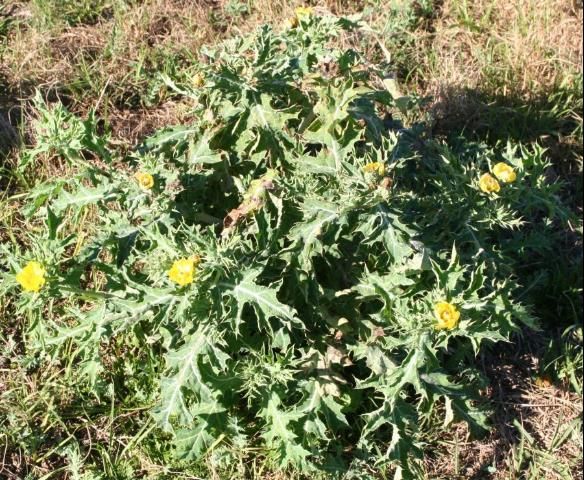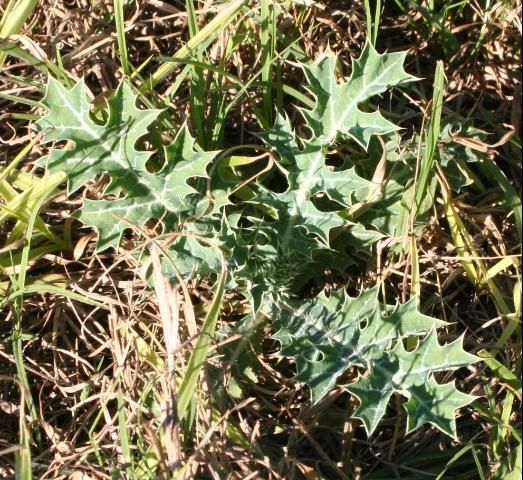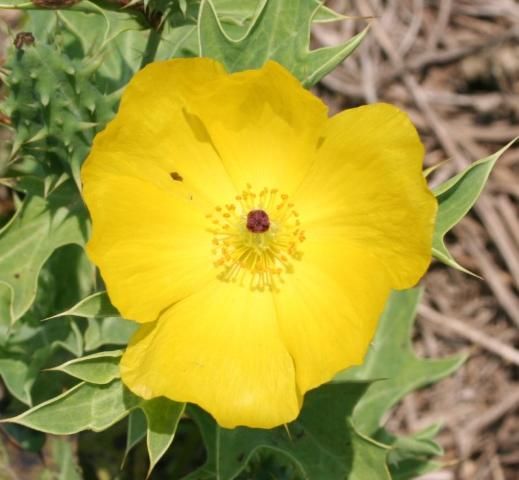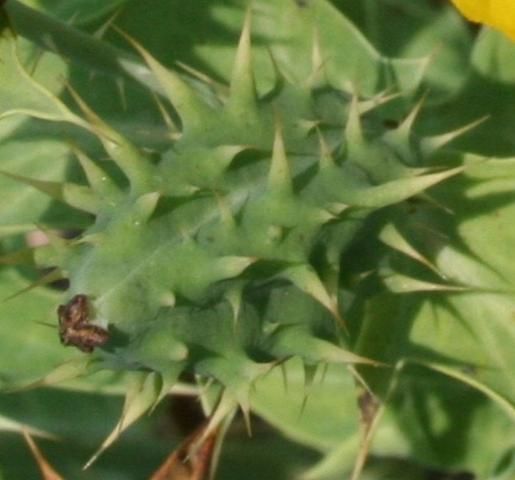Mexican prickly poppy (Argemone mexicana), also known as goatweed, Mexican thistle, prickly poppy, and yellow thistle, is a member of the poppy family (Figure 1). It is an annual or biennial plant that is found east of the Rocky Mountains, Hawaii, and Puerto Rico. In Florida, it is typically recognized as 'some type of thistle' until it flowers.

Young Mexican prickly poppies are often mistaken for thistles because their toothed and prickly leaf margins give them a thistle-like appearance (Figure 2). One recognizable difference is that Mexican prickly poppy exudes a yellowish milky sap when its stem is broken, while thistles do not. Another difference is that Mexican prickly poppy flowers are relatively large and yellow with 4 to 6 petals (Figure 3), while thistles have inflorescences composed of many small flowers. Like thistles, Mexican prickly poppy reproduces only through seed production. Its seeds are enclosed in a relatively large spiny capsule (Figure 4). Approximately 400 seeds can be produced in one capsule.



Key Characteristics
Stem: Cylindrical, whitish in color and with scattered prickles. The broken stem exudes a yellowish milky sap.
Leaves: Leaves can be up to 8 inches long, and are silvery-green with white veins and deep regular lobes. The upper surface of the leaf is smooth, while the underside has a few prickles along the midrib. The edges of the leaf are often lined with many prickles.
Flowers: Flowers are yellow and approximately 2.5 inches in diameter.
Seed: Seeds are produced inside a prickly capsule measuring about 1.5 inches in length. Approximately 3 to 6 openings in the capsule allow the seeds to disperse, but many seeds can remain inside the capsule for weeks until wind or animals shake the plant. Up to 400 seeds can be enclosed by a single capsule and they may stay dormant in the soil for many years.
Mexican prickly poppy is poisonous to livestock, but is not readily eaten, so there are relatively few cases of poisoning from this plant. However, plants in hay have caused poisoning. Seeds are its most toxic part, but the entire plant contains toxic elements.
Although this weed is common throughout Florida, it is typically not a wide-spread problem. For those who wish to control it, 2,4-D, WeedMaster (or other products containing 2,4-D + dicamba), or GrazonNext HL are the most effective and economical herbicides for control. The application rate for 2,4-D or WeedMaster is 3 pt/acre for broadcast applications, and 24 oz/acre for GrazonNext HL If spot spraying is necessary, a 3% solution of either 2,4-D or 2,4-D + dicamba or a 1% solution of GrazonNext HL in water is appropriate. Remember, it is best to treat a younger plant, especially before seed set occurs, to ensure that seeds are not added to the soil seedbank.